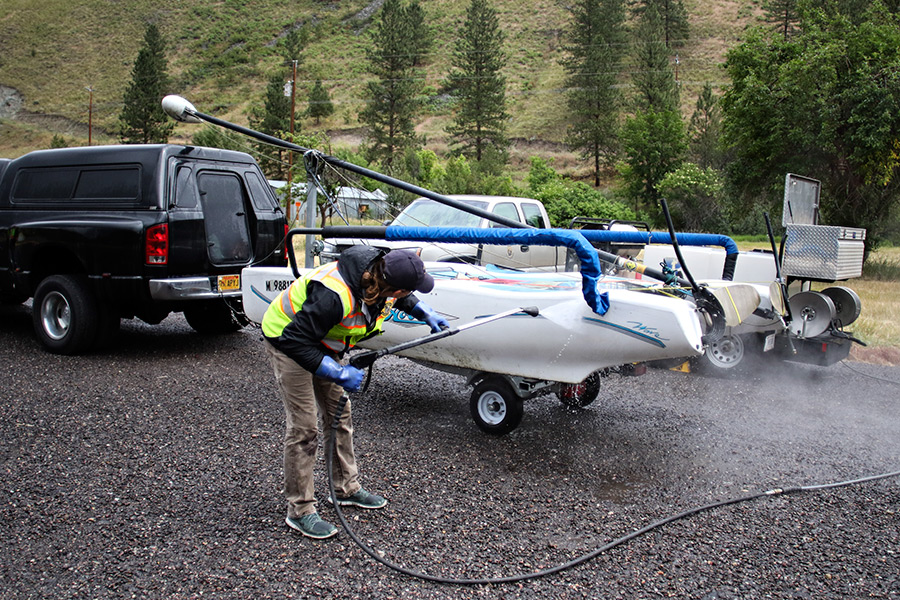FWP, Partner Agencies, Conduct More than 2,000 AIS Inspections Over Memorial Day Weekend
Inspectors intercepted 21 mussel-fouled boats bound for Montana waters or passing through the state
By Micah Drew
Despite less-than-ideal recreation weather over Memorial Day weekend, Montana Fish, Wildlife and Parks (FWP) and partner agencies conducted more than 2,000 aquatic invasive species (AIS) investigations, according to a recent press release.
To date, 14,000 watercraft in Montana have undergone inspection in 2022, leading to the detection of 21 mussel-fouled boats.
One detection over the holiday weekend occurred at a check station at Wibaux, when a driver bound for Washington failed to stop at the inspection station as required by FWP rules. An FWP game warden intercepted the driver and after mussels were detected, the boat was decontaminated and locked to the trailer.
“FWP Law Enforcement takes the threat of AIS to Montana waters very seriously,” Dave Loewen, chief of FWP’s Law Enforcement Division, said. “Our officers work closely with the Montana Highway Patrol and other enforcement entities to enforce AIS regulations.”
The increased visibility of inspection stations is becoming a familiar indicator of spring in Montana following the November 2016 discovery of destructive mussel larvae, or “veligers,” in Tiber and Canyon Ferry reservoirs east of the Continental Divide, marking the first time the invasive species have been detected in state waters and pulling a dire scenario into grim focus.
So far, the traces of contamination are restricted to the Missouri River Basin, but the likelihood of mussels hitchhiking on the hulls of boats or in bilge water or hidden away in irrigation equipment has prompted state and tribal agencies to launch a multi-pronged plan that includes bolstering a perimeter defense to intercept mussel-fouled boats.
Boat owners in Montana or traveling through the state must ensure their watercraft, trailers and gear are “clean, drained and dry” before transporting and should be aware of Montana’s inspection rules:
- Anyone transporting watercraft must stop at all open watercraft inspection stations they encounter. Failure to do so may result in a fine of up to $500.
- All watercraft coming into Montana from out of state must be inspected prior to launching. Non-residents must purchase a Vessel AIS Prevention Pass, which costs $30 for motorized and $10 for nonmotorized watercraft.
- All watercraft traveling west across the Continental Divide into the Columbia River Basin must be inspected prior to launching.
- Anglers must drain water and clean off plants, animals and mud from gear and equipment, dry everything off for at least five days before moving to a different water way, dispose of unwanted bait and fish parts and use non-felt soled boots.
FWP and its partner agencies operate more than 25 road-side watercraft inspection stations across the state. Inspection station locations in Northwest Montana include Whitefish Lake, Apgar-Lake McDonald, Polebridge, Eureka, Troy, Polson, Thompson Falls, Ravalli, Clearwater Junction and St. Regis.
AIS are plants, animals or pathogens that are not native to Montana and can cause environmental harm. Populations can reproduce quickly and spread rapidly because there are no natural predators or competitors. Invasive species can displace native species, clog waterways, impact irrigation and power systems, degrade ecosystems, threaten recreational fishing opportunities and can cause wildlife and public health issues.
For more information, visit https://fwp.mt.gov/conservation/aquatic-invasive-species or www.cleandraindrymt.com.